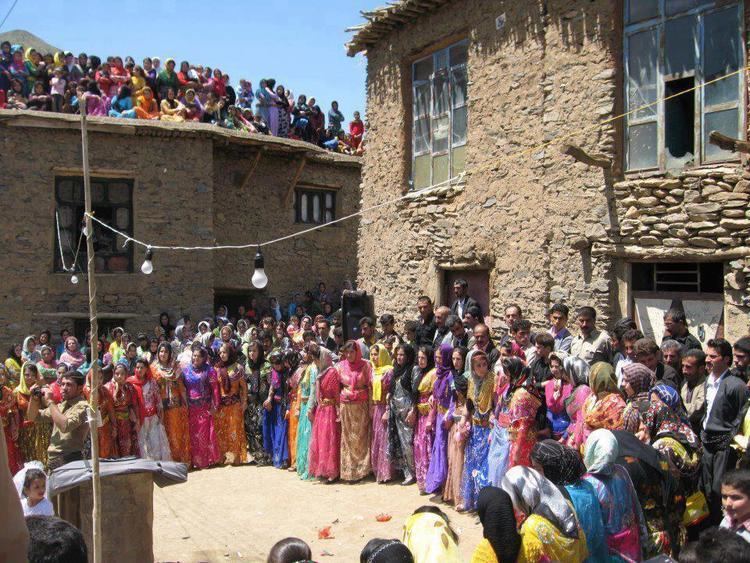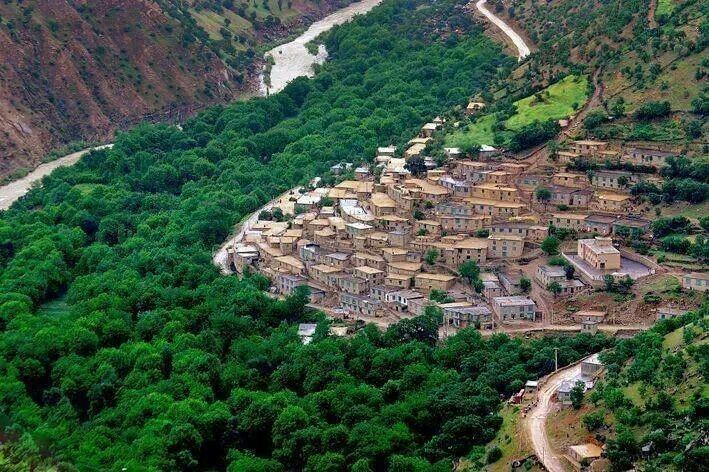 | ||
Hawrāmān (also Húrāmān) (Kurdish: ههورامان or Hewraman) or Ōrāmān (Persian: اورامان) or Avroman is a mountainous region located within the provinces of Kurdistan and Kermanshah in western Iran and in north-eastern Iraq within Iraq's Kurdistan Region. In Iran, the region includes the cities of Paveh and Mariwan and in Iraq, Halabja.
Contents

Hawraman has many springs and rivers that most their water mainly flows into Sirwan River. Bil spring (or Kani Bil) is one of these springs which has a discharge about 3000-4000 liters per second. The river which is made of Bil spring is the shortest river in the world with a total length of 15 meters.
Traveling to hawraman kurdistan 2015 hd assan photography
Archaeology and History
The earliest archaeological evidence shows that the region was inhabited by human since Middle Paleolithic Period. This evidence were discovered by archaeologists near Hajij village and include stone tools that made by Neanderthals or Early Modern Humans. Evidence for Late Paleolithic occupation discovered in a cave site in the Perdi Mala valley.
The Inscription of Sargon II at Tang-i Var pass near the village of Tang-i Var, indicate that the region was occupied by Assyrians during their military campaigns into Zagros.

The Parchments of Awraman, a set of three documents from the Seleucid and Parthian eras, were found in the region in 1909. They were discovered in a cave on Kuh-e Salan Mountain, near the village of Shar Hawraman, and subsequently sent to London.

Ancient religions are also practiced throughout Hawraman and the region is home to the ancient holy places of the Yarsan faith. Some scholars believe that the name Hawraman or Huraman has strong connections to the ancient Zoroastrian faith and claim that the name may have originated from Ahuraman or Ahura Mazda. Ahura Mazda is the name of God in the ancient Indo-Iranian Avestan language and comes from the ancient Zoroastrian faith, which is still being practiced by very small numbers of people in the region. Many areas in the Hawraman region are believed to have been pilgrimage sites for Zoroastrians prior to the advent of Islam.
Culture
The inhabitants of Hawraman are Kurdish people that speak Hewrami, part of the Gorani branch of the Kurdish language group.
Several Zazaki scholars regard Hawrami as one of the oldest dialects of the Goran–Zaza languages. According to a survey carried out by the Summer Institute of Linguistics in 1996, there were 40,000 speakers of Horami in the world.
Traditional clothing for women includes either a vest or long-sleeved jacket or long overcoat worn over a gown. An under dress and puffy pants is worn beneath the gown. Traditionally women wore Kurdish hats ornamented with valued coloured stones, beads and gold pieces. Usually younger women and young girls wear brightly coloured dresses adorned with many beads and sequins and the older women wear darker colours and white head-cover. Hawrami men generally wear a shirt; a vest with an open neck; and baggy trousers fitted at the ankles. A cotton sash 3–4 m long is folded in half lengthwise and wrapped tightly around the torso on waist. Men also wore traditional brown felt jackets with pointed shoulders called Kolabal.
Hawraman is best known for its unique arrangement of towns and villages built along the mountain slopes of the region. Typical instances of this local architecture are Khanghah, Hajij and Shemshir villages at Kermanshah province and Hawraman Takht, Palangan, Ruwar and Selin villages at Kurdistan province.
Siya Cheman is a style of singing practiced by Hawrami people and means dark eyes in Hewrami. It is performed without the use of any instruments, with the exception of the occasional use of a Kurdish hand-drum or Daff. Today, the Siya Cheman style is used mostly for storytelling and entertainment.
A poem about Hawraman by the famous Kurdish poet Goran:
A Tour in Hawraman
"A mountain mass, wild and defiant, Has gathered blue heaven in its embrace; The mantle of its peak is brilliant white snow, Dark with forest are its silent dales. Waters imprisoned in their tunnels Flow on, nor cease their windings round the hills; The roar and hiss of foam, the shrill song of the brook: Lullabies for grief in the solitude of night. The narrow footpath, feeling its way from tunnel to tunnel, Throws the wayfarer into anxiety without end; On the track rocky stairways, on the side great boulders, That heaven has not yet sent rolling down. Now up hill, now down hill, The bitter and sweet of the wayfarer’s world."
